
Concept explainers
a.
Use a graphing utility to create a
a.
Answer to Problem 25PS
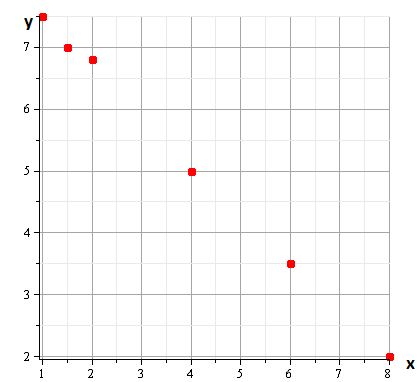
Explanation of Solution
Given information:
Use a graphing utility to create a scatter plot of the data.
Calculation:
Consider the following data ,
Now draw the scatter plot,
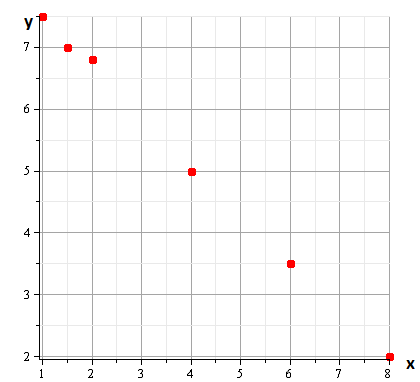
Hence, the scatter plot is drawn.
b.
Verify that the data could best be modelled by a linear model, an exponential model, or a logarithmic model,
b.
Answer to Problem 25PS
Explanation of Solution
Given information:
Decide whether the data could best be modelled by a linear model, an exponential model, or a logarithmic model,
Calculation:
Consider the following data ,
The best model for this data is linear model.
Hence, the best model is
c.
Explain the model is an exponential model.
c.
Answer to Problem 25PS
Points are decresing linearly.
Explanation of Solution
Given information:
Explain why you chose the model an exponential model.
Calculation:
Consider the following data ,
The best model for this data is linear model.
It is observed from the graph that points are decreasing linearly, thus linear model is best suited .
Hence, we choose linear model.
d.
To find the model is an exponential model for the data and graph the model with the scatter plot.
d.
Answer to Problem 25PS
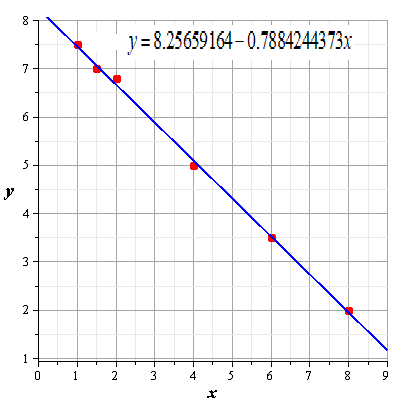
Explanation of Solution
Given information:
Use the regression feature of the graphing utility to find the model is an exponential model for the data and graph the model with the scatter plot.
Calculation:
Consider the following data ,
By using the value of
Hence the required model is ,
Now scatter plot for this model,
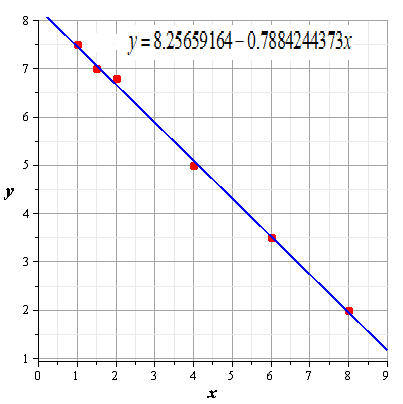
Hence, the required model is
e.
Determine the model you chose fits the data.
e.
Answer to Problem 25PS
Model fits the data.
Explanation of Solution
Given information:
Determine how well the model you chose fits the data.
Calculation:
Consider the required model is ,
Now scatter plot for this model,
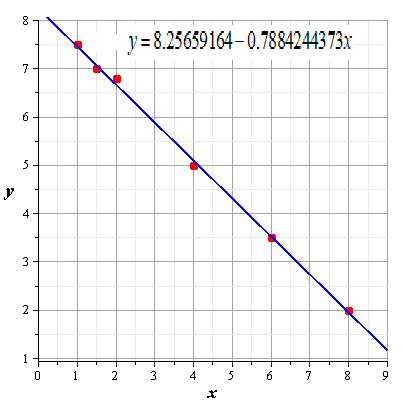
The graph shows model fits the data,
Hence, the model fits the data.
Chapter 3 Solutions
EBK PRECALCULUS W/LIMITS
- Consider the following system of equations, Ax=b : x+2y+3z - w = 2 2x4z2w = 3 -x+6y+17z7w = 0 -9x-2y+13z7w = -14 a. Find the solution to the system. Write it as a parametric equation. You can use a computer to do the row reduction. b. What is a geometric description of the solution? Explain how you know. c. Write the solution in vector form? d. What is the solution to the homogeneous system, Ax=0?arrow_forward2. Find a matrix A with the following qualities a. A is 3 x 3. b. The matrix A is not lower triangular and is not upper triangular. c. At least one value in each row is not a 1, 2,-1, -2, or 0 d. A is invertible.arrow_forwardFind the exact area inside r=2sin(2\theta ) and outside r=\sqrt(3)arrow_forward
- A 20 foot ladder rests on level ground; its head (top) is against a vertical wall. The bottom of the ladder begins by being 12 feet from the wall but begins moving away at the rate of 0.1 feet per second. At what rate is the top of the ladder slipping down the wall? You may use a calculator.arrow_forwardExplain the focus and reasons for establishment of 12.4.1(root test) and 12.4.2(ratio test)arrow_forwarduse Integration by Parts to derive 12.6.1arrow_forward
- Explain the relationship between 12.3.6, (case A of 12.3.6) and 12.3.7arrow_forwardExplain the key points and reasons for the establishment of 12.3.2(integral Test)arrow_forwardUse 12.4.2 to determine whether the infinite series on the right side of equation 12.6.5, 12.6.6 and 12.6.7 converges for every real number x.arrow_forward
 Calculus: Early TranscendentalsCalculusISBN:9781285741550Author:James StewartPublisher:Cengage Learning
Calculus: Early TranscendentalsCalculusISBN:9781285741550Author:James StewartPublisher:Cengage Learning Thomas' Calculus (14th Edition)CalculusISBN:9780134438986Author:Joel R. Hass, Christopher E. Heil, Maurice D. WeirPublisher:PEARSON
Thomas' Calculus (14th Edition)CalculusISBN:9780134438986Author:Joel R. Hass, Christopher E. Heil, Maurice D. WeirPublisher:PEARSON Calculus: Early Transcendentals (3rd Edition)CalculusISBN:9780134763644Author:William L. Briggs, Lyle Cochran, Bernard Gillett, Eric SchulzPublisher:PEARSON
Calculus: Early Transcendentals (3rd Edition)CalculusISBN:9780134763644Author:William L. Briggs, Lyle Cochran, Bernard Gillett, Eric SchulzPublisher:PEARSON Calculus: Early TranscendentalsCalculusISBN:9781319050740Author:Jon Rogawski, Colin Adams, Robert FranzosaPublisher:W. H. Freeman
Calculus: Early TranscendentalsCalculusISBN:9781319050740Author:Jon Rogawski, Colin Adams, Robert FranzosaPublisher:W. H. Freeman
 Calculus: Early Transcendental FunctionsCalculusISBN:9781337552516Author:Ron Larson, Bruce H. EdwardsPublisher:Cengage Learning
Calculus: Early Transcendental FunctionsCalculusISBN:9781337552516Author:Ron Larson, Bruce H. EdwardsPublisher:Cengage Learning





